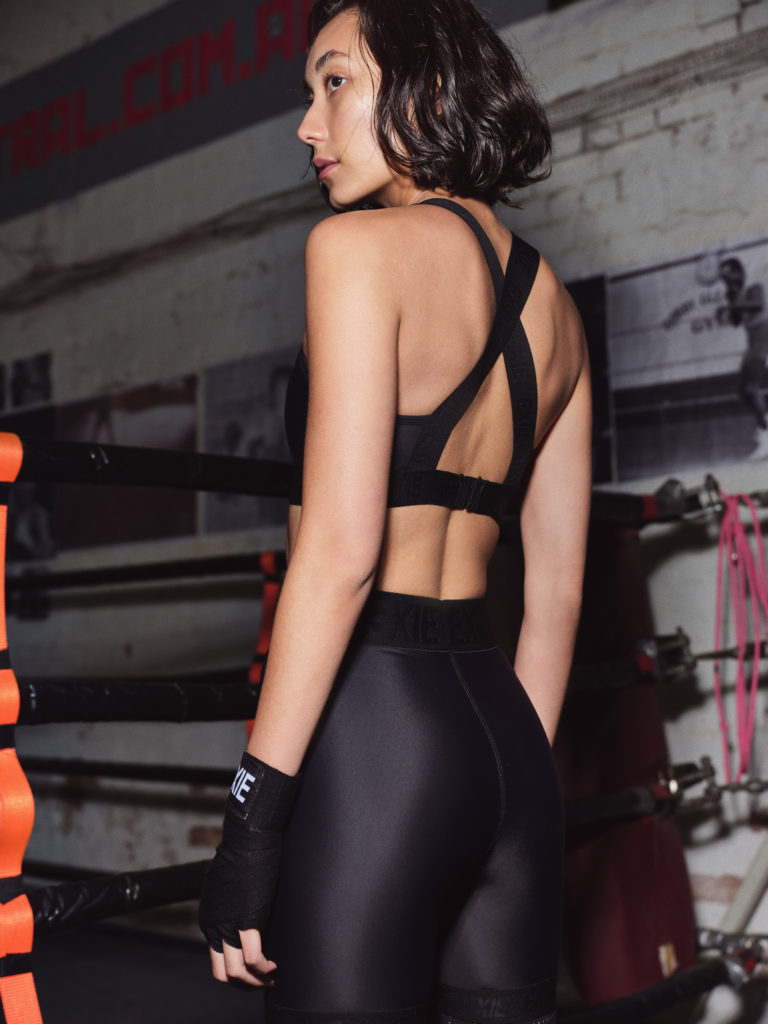In the same way that we are conscientious of what foods we put into our bodies or beauty products we put onto our skin, we must have the same mindset of what we wear with an understanding of how it was produced and how it affects people and our planet.
When I was 14 and had dreams of being a fashion designer, I was drawn to the apparel industry purely because of my fascination with the process of creating. 17 years later that same raw obsession for my craft has not stopped, but my values have definitely been changed. Entering into the fashion industry, I was an avid consumer of fast fashion and like my peers wanted the newest trend for a good price, with little regard for how it was produced.
After studying an honour’s degree in fashion design, followed by a tailoring diploma, whilst working in the global fashion industry, I not only learned how to be a good designer but also developed a clear understanding of the implications that the production process has on our planet, environment and us. After returning to Melbourne from a Senior Designer role at Esprit in Germany, I worked in another fast fashion brand for over a year whilst battling with the haunting question; “have I spent more than half of my life on the wrong path?” I couldn’t bear to continue working in my career as a fashion designer any longer knowing that what I was doing was completely against my values.
“Sustainability” is a throw around word, and without working in the fashion industry and having the depth of knowledge of the production process, it is very difficult for a consumer to understand what makes a product “sustainable”. A basic garment consists of fabric, trims, a woven brand label, care label, thread, a swing tag and packaging. All of these elements are produced with a material composition and manufactured by a machine operated by a person [or manufactured just by a person]. To track the sustainability of a garment in all its parts would be an in-depth research project, so I’ll make this as simple as possible to understand.
Let’s talk about the sustainability of the garment’s fabric for example’s sake; the material is a cotton/polyester blend. Let’s say the cotton was sourced in India. Like any plant, farm pesticides are used, and specifically in farms located in India [who are the main producers of cotton in the world,] the chemicals used on these plants are deadly and not only affect the health of the farmer himself growing the cotton, but the complete region of these crops, affecting the health of every person within that area due to toxicity in the soil and water.
Then we have the polyester component which is a synthetic fibre, either made from scratch [derived from coal, air, water and petroleum formed from a chemical reaction between acid and alcohol] or recycled from existing items like plastic bottles and fishing nets. Similar to cotton, polyester is water thirsty due to large quantities of water used for cooling the polyester during its energy-intensive heating process. Furthermore, polyester is not biodegradable and the dyes used to give polyester a certain colour are not environmentally friendly.
A predicted rise in fashion production volumes could push carbon emissions to around 2.7 billion metric tons a year by 2030 if no abatement actions are taken. However, if the industry continues to embrace decarbonization initiatives at its current pace, it will cap emissions at around 2.1 billion metric tons a year by 2030, roughly the same as they are today.
With this knowledge at the forefront of my mind and a constant burning desire to continue my craft, I thoughtfully decided to create a brand that both empowers women to look after their bodies and help clean our earth whilst looking good. It became my mission to be a thought leader in changing our industry that is responsible for 10% of our global carbon emissions.

Photographer Suleyman Karaaslan
In December 2019, I launched my namesake street sportswear brand, EXIE, with a collection made completely from recycled plastic bottles and fishing nets cleaned from our oceans, and sent to customers in biodegradable packaging. It was the most exciting time for me to be able to offer women premium quality, unique designed, recycled sportswear. Since the launch of EXIE, I have worked with the same fabric mill to develop new designs and have also implemented seamless designs which drastically reduces waste by approximately 125g per garment!
To explore and implement sustainability further into the DNA of EXIE, there are a few projects in the pipeline that I’m really excited about. I can’t say too much, but one of them involves a collaboration with another brand who focuses on up-working existing garments, breathing new life into something that was considered “dead-stock”. As a brand, this is the way we tackle the “sustainability” beast, and there are many things consumers can do to help.
Ultimately, for the fashion industry to make a positive impact on the climate, the culture of fashion needs to change. The necessary reductions in greenhouse gas emissions won’t be possible unless we buy a lot less, and get much better at handling the end-of-life stage of garments. The best way around this is to invest in high-quality timeless garments that you will keep for life, and if the item gets damaged over time knowing the garment has been well designed so it can be repaired. Furthermore, supporting ethical and local brands that care about sustainability help spread a culture for other companies to be accountable for their practices.
Try our sustainably produced garments at www.exiestudio.com and receive 20% off your order with House of Maxx exclusive code ‘HOM20’.
Christina Exie xx

